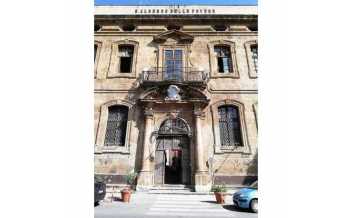“Palermo was lovely. The most beautifully situated town in the world – it dreams away its life in the Conca d’Oro, the exquisite valley that lies between two seas. The lemon groves and the orange gardens were entirely perfect.” - Oscar Wilde
Palermo is the vibrant capital of Sicily and the most conquered city in the world. Having been ruled by the Greeks, Romans, Ottomans and Normans, the city has an unrivalled selection of architectural styles. Buildings such as the Palermo Cathedral, Zisa Castle and the Norman Palace mix Arab and Norman characteristics which makes Palermo fascinating.
Wander around Palermo’s winding streets decorated with Gothic, Baroque and Art Nouveau churches, palaces and buildings before exploring its wealth of green spaces - no wonder the city was known as the ‘garden city’. Enjoy a panoramic view of the Gulf of Palermo from the seafront park, Foro Italico. Or, swap the bustling city for the sandy beaches within the Capo Gallo Nature Reserve, just a short drive from the city centre.
Try some of Palermo’s renowned cuisine at the outdoor markets which sell colourful fruit and vegetables, as well as fish, meat and traditional street food. It’s the perfect place for lovers of food and culture. Immerse yourself in the Italian coffee custom and drink an espresso on one of the numerous terraces; or browse the one off boutiques to find something that you can guarantee you’ll never see anybody else wearing.
Activities
-
Castello della Zisa, Palermo
It is included in the UNESCO Arab-Norman Palermo and the Cathedral Churches...
-
-
Chiesa del Gesù, Palermo, Italy
Built by the Jesuits in Sicily (1563-1633), this church looks plain and...
-
Church of San Cataldo, Palermo
Erected in 1154 as a notable example of the Arab-Norman architecture which...
-
English Garden, Palermo, Italy
Designed in 1851 and influenced by the classic English style popular...
-
Fontana Pretoria, Palermo, Italy
This Florentine fountain was brought to Palermo in 1573 and was given a place...
-
Foro Italico, Palermo
Just a short drive from Palermo’s city centre is this seafront park, popular...
-
Massimo Theater, Palermo
Italy’s largest theatre is in Palermo, just a 10-minute walk from the city...
-
Mercato del Capo, Palermo
Running the length of Via Sant'Agostino, the market offers you the chance to...
-
Modern Art Gallery Sant'Anna, Palermo
It is located in a complex consisting of the former Franciscan convent of the...
-
Museo Palazzo Mirto House Museum, Palermo
The building is located in the historic center of Palermo, in the Kalsa, the...
-
-
Piazza Marina, Palermo
It is located down the Cassaro street, in the quarter of the Kalsa, within...
-
Real Albergo dei Poveri, Palermo
The Albergo dei Poveri in Sicily, originally known as Reale Albergo dei...
-
Sicilian Ethnographic Museum Giuseppe...
The museum has two locations: the main part is located in one of the...
-
Villino Florio, Palermo
It is representative office of the Sicilian Region. The house, nestled in a...





















